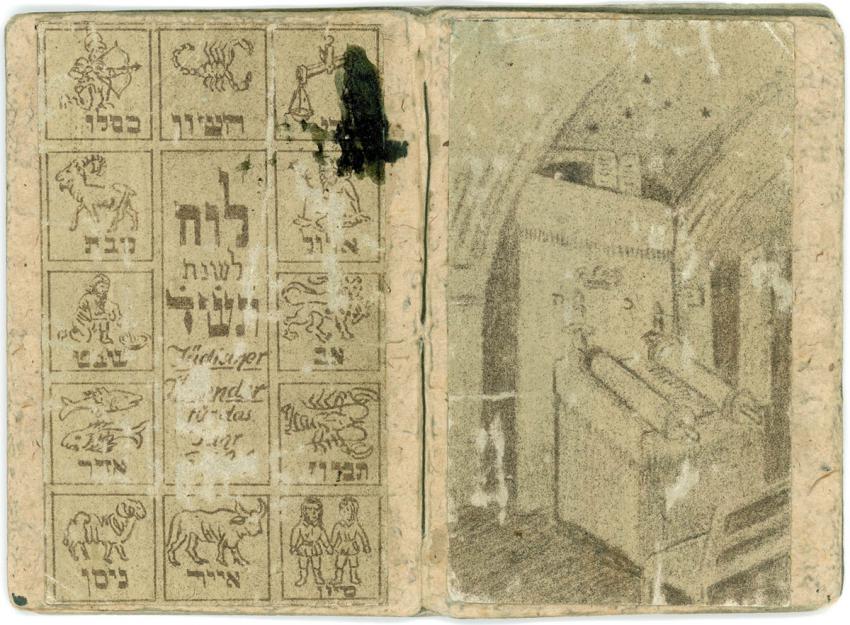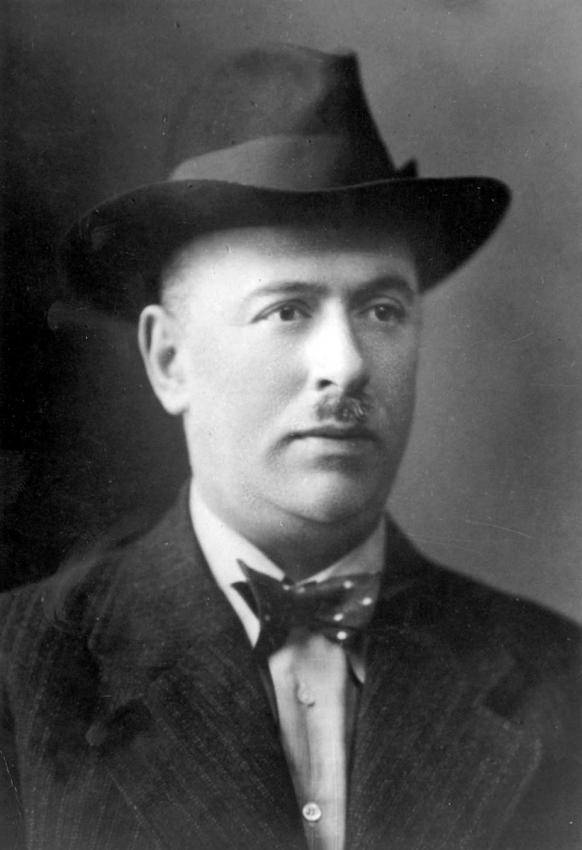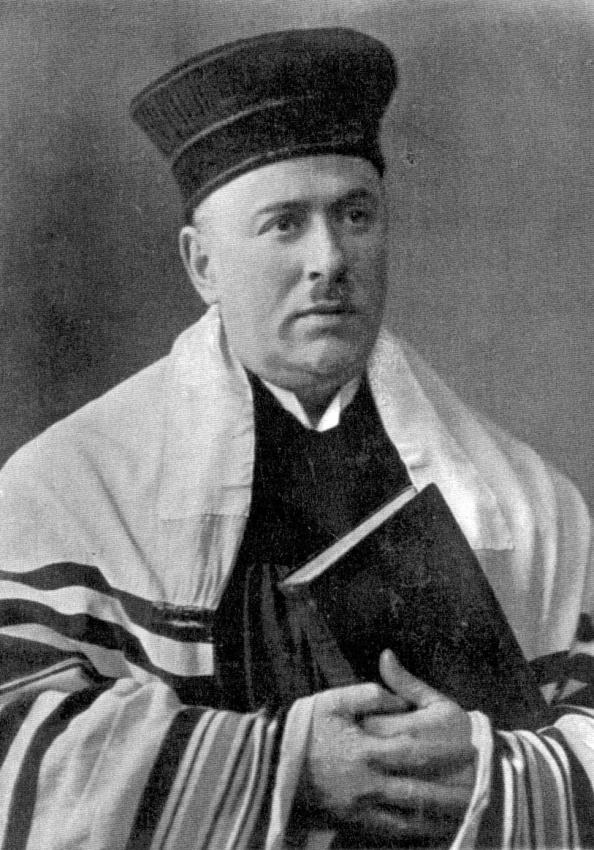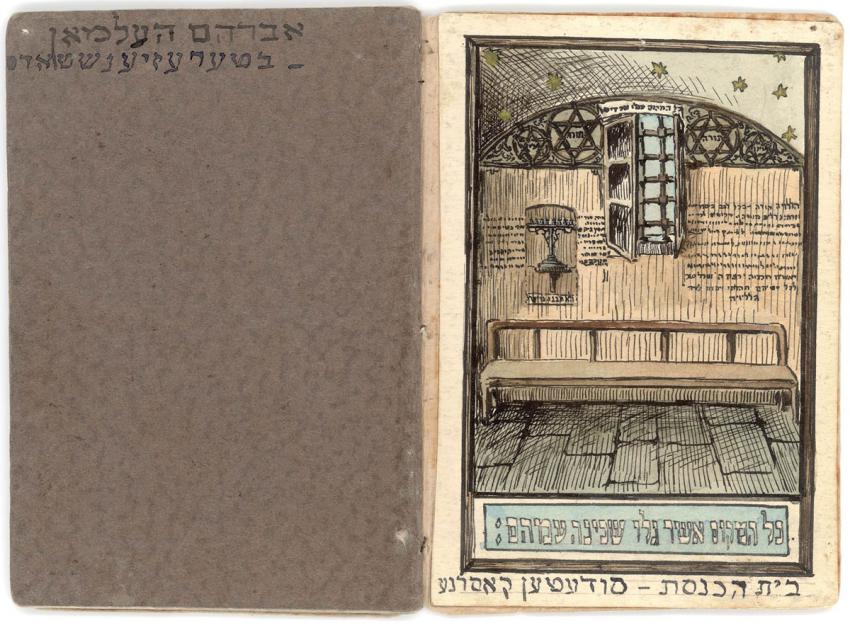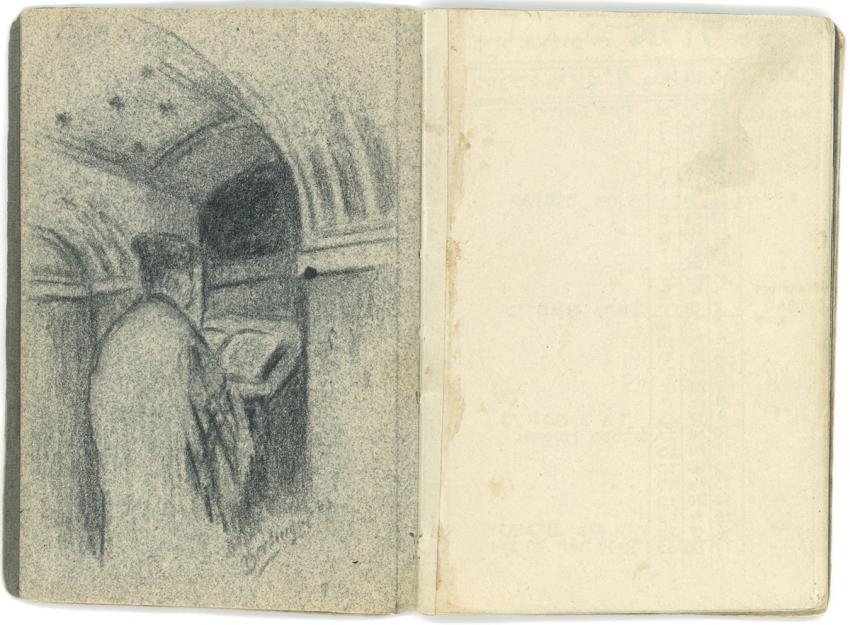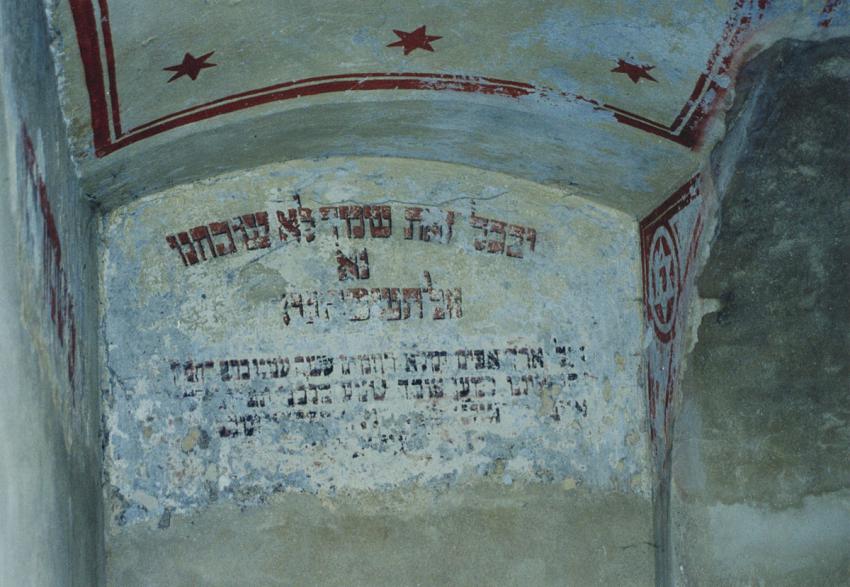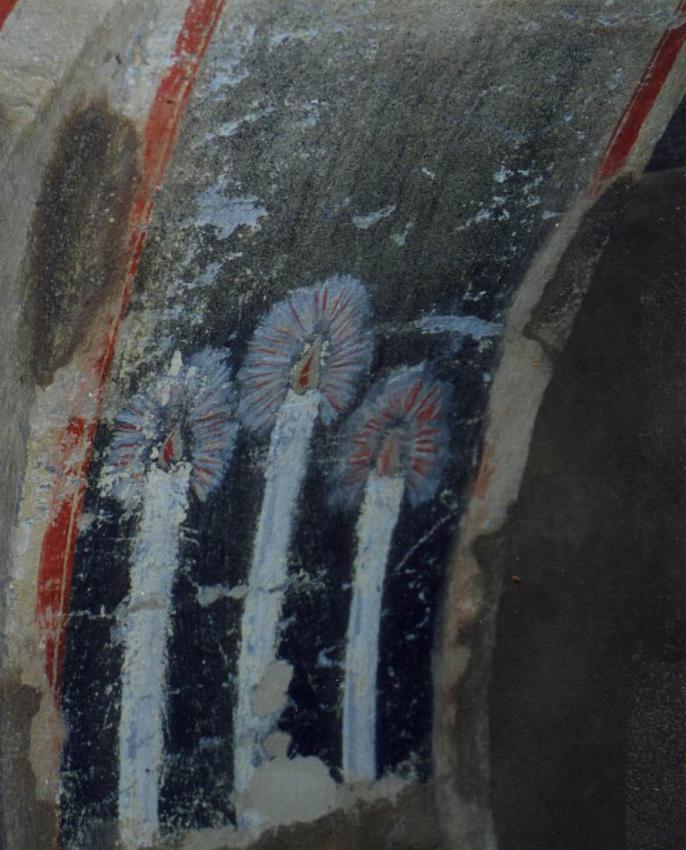There was little information regarding how the calendar came into the collection, but there are clues from the calendar itself. The cover includes a title and a depiction of the astrological signs of the months of the Jewish calendar, each titled with their Hebrew name. Inside the calendar are a number of illustrations, including one of a man (perhaps a cantor) praying at a lectern inside a synagogue whose walls and ceiling are decorated. In the corner of the illustration is the artist’s signature: “A. Berlinger”. The back cover of the calendar depicts the interior of a synagogue.
Asher Berlinger is familiar to us from drawings he drew in Theresienstadt, one of which is in the Art collection of Yad Vashem’s Museum. His daughter Rosalie Baum, today a resident of the United States, was able to add information about his background and his many talents, as well as the story of the family’s fate.
Before the war, Asher Berlinger was active in the Jewish community of Schweinfurt, Germany as a cantor and as a teacher of art and music. He was also a craftsman of Judaica. Rosalie filled out Pages of Testimony for her parents from which we learn that Asher and Bertha Berlinger were deported in 1942 from their home to Theresienstadt. Asher and Bertha did not survive the Holocaust but their daughters, Senta and Rosalie, whom they had managed to send to England on the Kindertransports before the outbreak of war, survived.
Inside the back cover of the calendar there is a handwritten signature written in Hebrew: “Avraham Hellmann, Theresienstadt”. On the opposite page, a watercolor painting has been pasted in. Depicted is the interior of a synagogue and below it a Hebrew inscription: “in all the [Jewish people’s] places of exile, the Divine Spirit was with them” (Jerusalem Talmud, Ta’anit 1.1). On the line below is written in Hebrew: Sudetenkaserne Synagogue. Research that we conducted in order to discover more details about Avraham Hellmann revealed that Charlotte Hellmann Lederer, his widow, had donated the calendar along with many details about religious life in Theresienstadt. Charlotte, Avraham (Adolf) and their daughter Lilly were deported from their home in Brno, Czechoslovakia in December 1941. It is not known who painted the illustration of the Sudetenkaserne Synagogue that was pasted into the original calendar. It is also not clear if the synagogue in the watercolor is the same synagogue that served as a model for Asher Berlinger in the drawings that are an integral part of the blueprinted calendar.
From a comparison of Berlinger’s drawings with photographs taken of the interior of a synagogue discovered in recent years on the grounds of Theresienstadt inside a private home, it is clear that this synagogue was clearly Berlinger’s model.
This is apparent, not only from the star painted ceiling, but in particular, by the lit candles that are painted onto the spans of the arched ceiling visible in the drawing of the cantor praying at the lectern. (See accompanying illustrations). Still visible on the walls of the former synagogue are remnants of Hebrew phrases. It is quite possible that they too were painted on the walls by Berlinger. The passages chosen tell us about the pervading mood of the worshippers. In addition to passages that it is common to find decorating synagogues everywhere, the walls of “The Hidden Synagogue” in Theresienstadt are unique in their inclusion of passages from the Tachanun, an ancient part of the liturgy of the morning prayers that is chillingly appropriate to the reality of the Jews during the Holocaust:
“God, relent from the evil meant for your people…Look from Heaven and perceive that we have become an object of scorn and derision among the nations; we are regarded as sheep to slaughter, to be killed, destroyed, beaten and humiliated. But despite all this we have not forgotten Your Name – we beg you not to forget us.”
Asher Berlinger was deported from Theresienstadt to Auschwitz on the 28th of September 1944 , where he was murdered. His wife Berta Berlinger née Braunold was deported to Auschwitz a week later on October 6th, 1944. She too was murdered in Auschwitz.
Examination of the dates of deportation to Auschwitz of both Asher Berlinger and Adolf Hellmann reveals that both individuals, both active as cantors and involved in art, both communal workers in their respective communities, were deported to Auschwitz on “transport Ek”. From the testimony of Avraham Hellmann’s wife, Charlotte, we know that the transport of September 28th 1944, the day after Yom Kippur 5705, departed after the gathered men “who had indeed not forgotten His Name” had spent the previous Day of Atonement on the ramp of Theresienstadt in prayer and supplication.
We have no evidence that these two individuals had contact with each other, but the study of the activities of both men in the area of religious life in Theresienstadt, teaches us that many outstanding individuals contributed their abilities and talents to the community of Jews in the camp and in this way sanctified life in complete contrast to the Nazis who pursued them and attempted to trample human dignity.
In retrospect we know that Theresienstadt was only a station on the path to annihilation. It remains for us to be impressed by the steadfast faith of those who, even in the face of the pitiful reality of the ghetto, tried at all cost to preserve the framework of religious life – to prepare calendars that enabled them to observe the holidays at their appointed times, to set aside places for prayer and to use art to express the sentiments of their hearts.
Yad Vashem Artifacts Collection
Gift of Charlotte Hellmann-Lederer, Tel Aviv
